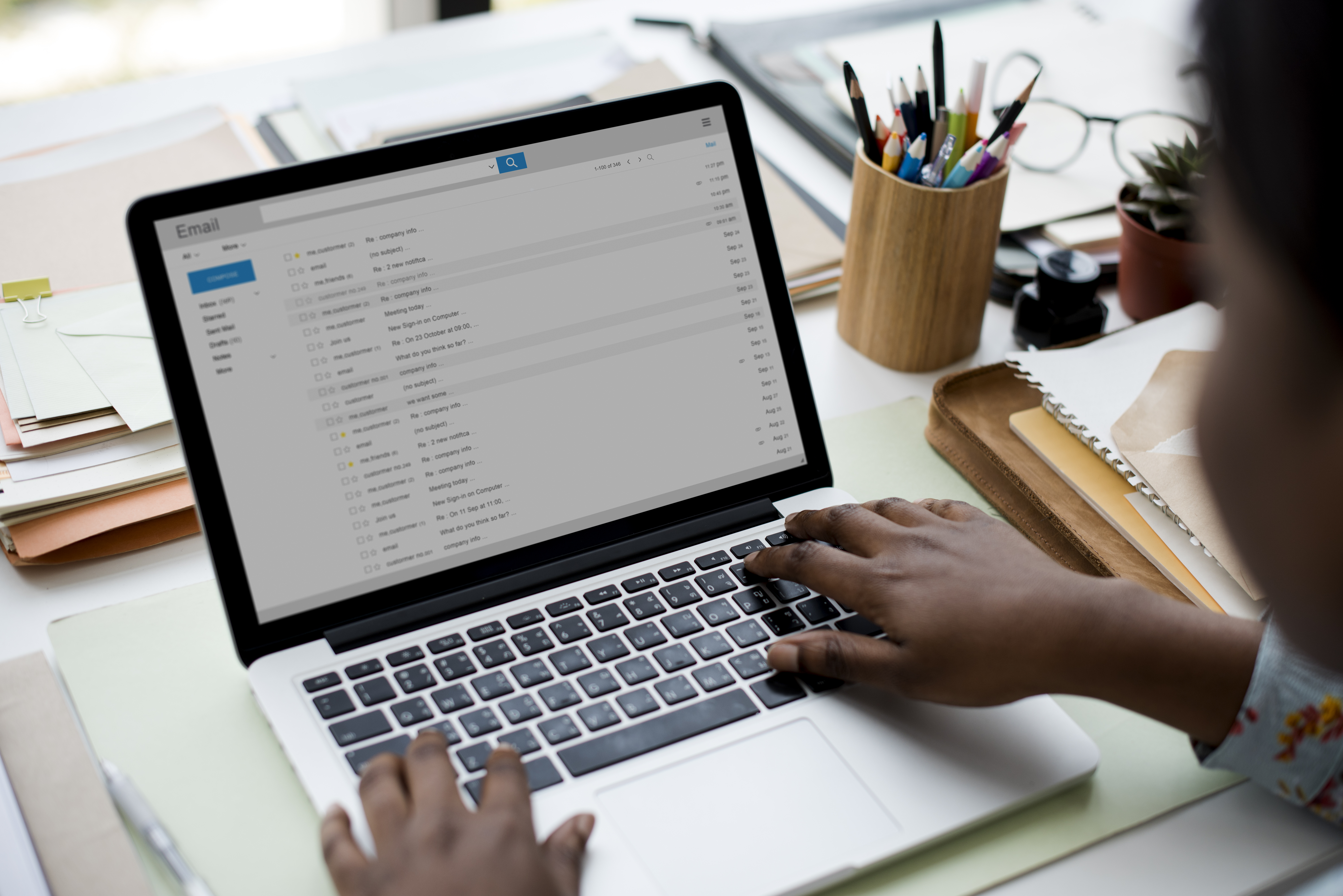In the fast-paced rhythm of today's professional environment, maintaining a sense of calm and focus is more important than ever. This is why the practice of mindfulness at work is essential. It's not just a tool for personal well-being; it's a strategy for enhancing efficiency and productivity in the workplace.
By integrating mindfulness into your daily routine, you open the door to a more balanced, focused, and fulfilling professional experience. Let's explore how mindfulness can transform everything from the way you work to how you perceive and interact with your work environment.
Jump to:
- What is Mindfulness?
- Why Mindfulness is Important in the Workplace
- Start with Mindful Mornings
- Mindful Listening in Meetings
- Mindful Emailing and Communication
- Take Mindful Breaks
- Calm a Busy Mind With Mindfulness
- Practice the 4 Ts of Mindfulness at Work
- Mindfulness for Leaders - Creating a Mindful Workplace Culture
- Study Mindfulness for £29
What is Mindfulness?
Mindfulness is the practice of being fully present in the moment. It's about being aware of where you are and what you’re doing without being overly reactive or overwhelmed by what’s going on around you. Imagine it as having a mental pause button, giving us the space to respond thoughtfully to our environment and situations.
Recommended for you!
Best SellersWhy Mindfulness is Important in the Workplace
Mindfulness in companies helps reduce stress, enhances performance, and improves relationships among colleagues. For leaders, mindful leadership fosters a supportive environment, encouraging teamwork and empathy. The benefits are clear, making mindfulness in business a valuable tool for personal and professional growth.

How to be More Mindful at Work
Let’s explore six practical and straightforward strategies that you can implement for mindfulness in your daily professional routine. These tips are designed to help you stay centred, enhance your focus, and foster a more positive and productive work environment:
1. Start with Mindful Mornings
Before jumping into work, take a moment to set yourself up for the day ahead. One effective way to achieve this is through a brief work meditation session in the morning. Even just a few minutes dedicated to focusing on your breath can make a substantial difference. Sit comfortably, close your eyes, and pay attention to the rhythm of your breathing. Notice the air entering and leaving your body, the rise and fall of your chest. This practice helps clear your mind, reducing stress, and preparing you mentally for the day ahead.
If meditation isn't your cup of tea, perhaps enjoying an actual cup of tea might be. Engage in this simple activity mindfully – notice the warmth of the cup, the aroma of the tea, and the flavour as you sip. Try to remain fully present in that moment, not distracted by thoughts of the day's tasks or yesterday's challenges.
You can incorporate mindfulness into your morning routine in other ways. While showering, focus on the sensation of the water, the sound it makes, and the way it feels on your skin. Or, while eating breakfast, eat slowly and savour each bite, paying attention to the textures and flavours.
Starting your day with such mindful practices doesn't require a lot of time, but the impact it can have on your mood, focus, and productivity is significant. It sets a tone of calm and presence, allowing you to approach your work with a clear, composed mind. This mindset can transform how you interact with colleagues, how you handle tasks, and how you view challenges throughout the day.
2. Mindful Listening in Meetings
Ever found yourself zoning out in meetings? Meetings are a cornerstone of workplace communication, yet it's all too common to find your mind wandering during them. To combat this, we introduce the concept of mindful listening, a powerful tool that can transform the dynamics of meetings and enhance overall communication.
Mindful listening involves fully engaging with the speaker and giving them your undivided attention. It means listening with the intent to understand, not just to reply. This requires a conscious effort to stay present, focusing on the speaker's words, tone, and body language and setting aside any preconceived notions or judgments.
When practising mindful listening, resist the urge to formulate your response while the other person is still talking. This habit can lead to missing key points and can make the speaker feel undervalued. Instead, allow yourself to absorb what is being said, and pause for a moment after the person has finished speaking before you respond. This pause gives you time to formulate a thoughtful response and signals to the speaker that you are genuinely considering their words.
This approach can significantly enhance the quality of interactions in meetings. When team members feel heard and understood, it fosters a culture of respect and openness. It encourages more meaningful exchanges and can lead to more productive, collaborative, and innovative outcomes. Mindful listening also helps reduce misunderstandings and conflicts, as it ensures that all viewpoints are fully heard and considered.
3. Mindful Emailing and Communication

It’s easy to get overwhelmed by constant emails and messages. However, adopting a mindful approach to emailing and messaging will enhance the clarity and effectiveness of your interactions.
The practice of mindful emailing starts with a simple yet powerful step: taking a breath before responding. This moment of pause is essential. It allows you to switch from a reactive mindset to a more considered and mindful one. Use this brief pause to centre yourself, bringing your full attention to the task at hand.
Next, ensure that you read the email thoroughly. It's tempting to skim through messages, especially when they're piling up in your inbox. Careful reading is key to understanding the full context of the communication, so pay attention to details that might be easily missed in a hurried read-through. Note the tone of the email, the specific requests or questions posed, and any underlying sentiments that might not be stated.
When crafting your response, continue to maintain this mindful approach. Consider your words carefully and aim for clarity and conciseness in your reply. Think about how your message might be received by the other person. This is especially important in written communication, where tone and intent can sometimes be misinterpreted. A well-thought-out, clear response reduces the likelihood of misunderstandings and shows respect and consideration for the recipient.
Mindful email communication also means managing your relationship with your inbox. Set specific times for checking and responding to emails rather than constantly reacting to notifications. This helps reduce the sense of constant urgency and allows you to approach your communications in a more calm and focused manner.
4. Take Mindful Breaks
Feeling swamped? When the workload seems overwhelming, your instinct might be to double down and push through without stopping. However, this approach can lead to decreased productivity and increased stress. That’s why it’s important to incorporate mindful breaks into your day.
A mindful break is a deliberate pause in your routine designed to refresh both your mind and body. This doesn't have to be for long; even a few minutes can make a significant difference. The key is to step away from your work tasks and engage in a brief activity that allows you to reset and recharge.
One effective method is a short workplace meditation. Dedicate five minutes to sit quietly at your desk or in a calm space. Close your eyes and focus on your breath, noticing the sensations of each inhale and exhale. This simple practice can help clear your mind, reduce stress, and improve concentration.
Another option is to take a walk outside. The change of scenery, fresh air, and physical movement can be incredibly revitalising. As you walk, try to stay present, observing the environment around you, the feel of the ground under your feet, and the rhythm of your steps. This can help break the cycle of continuous work and mental fatigue.
If you can't leave your desk, mindful breathing can be a great alternative. Take a few deep breaths, focusing on the rise and fall of your chest and the sensation of the air moving through your nostrils. This simple practice can help lower your heart rate and bring a sense of calm.
The purpose of these breaks is to give your mind and body a much-needed pause. They allow your mental and emotional state to reset, leading to improved focus, creativity, and well-being when you return to your tasks.
Recommended for you!
Best Sellers5. Calm a Busy Mind With Mindfulness
Mindfulness can be a powerful tool to calm a busy mind and bring a more focused and composed approach to your work.
The first step in this process is to pause and ask yourself "What’s the one thing I need to focus on right now?" This helps cut through the noise and clutter of multiple tasks, allowing you to identify the most immediate or important item that requires your attention. By isolating this single task, you reduce the mental load of trying to keep track of several things at once.
Once you've identified your priority, dedicate your full attention to it. It might help to break the task down into smaller, manageable steps and focus on completing each one before moving on to the next. When your attention isn't split between multiple tasks, you're able to think more clearly and work more efficiently. This focused approach can lead to better problem-solving, creativity, and decision-making.
Additionally, this method of working mindfully helps reduce stress. Overwhelming feelings often arise from a sense of losing control over our workload. By methodically addressing each task with full attention, you regain control over your work, which can bring a sense of calm and accomplishment.
6. Practice the 4 Ts of Mindfulness at Work
Remember the 4 Ts: Take Time to Think. This principle is especially valuable when faced with challenging situations or decisions. It's about creating a habit of pausing and reflecting before reacting, a practice that can enhance your interactions and decision-making process at work.
When confronted with a difficult scenario, whether it's a tight deadline, a complex project, or a misunderstanding with a colleague, the instinctive response is often to react immediately. However, this immediate reaction is frequently driven more by emotion than rational thought, which can lead to less-than-ideal outcomes. The 4 Ts encourage a different approach.
Taking time to think means allowing yourself a moment of pause, no matter how brief, to consider the situation calmly and clearly. During this pause, you step back from the immediacy of the situation and give yourself the mental space to process what’s happening. This could involve taking a few deep breaths to centre yourself, stepping away from your desk for a moment, or simply closing your eyes to gather your thoughts.
In this space of reflection, ask yourself key questions: What is the core issue here? What are the possible outcomes of different responses? What is the most constructive way to address this situation? This thoughtful consideration enables you to move from a reactive stance to a proactive one.
Mindfulness for Leaders - Creating a Mindful Workplace Culture

For leaders, integrating mindfulness into your leadership style can positively impact your team and the overall workplace atmosphere. Here are some ways you can do so:
- Leading by Example: Demonstrate mindfulness in your leadership style, setting a powerful precedent for the team.
- Encouraging Open Communication: Create a space for transparent and honest conversations, ensuring team members feel heard and respected.
- Recognising Team Efforts: Regularly acknowledge and celebrate the achievements and contributions of your team members.
- Being Present in Interactions: Commit to being fully attentive and engaged during all interactions, showing genuine interest and concern.
- Promoting a Mindful Work Environment: Actively foster a workspace where mindfulness is encouraged through practices like group meditation or mindful breaks.
- Building Empathy: Practice understanding and empathising with your team's perspectives and challenges.
- Supporting Work-Life Balance: Advocate for a healthy balance between work and personal life, recognising its importance for overall well-being.
- Fostering Personal Development: Encourage team members to engage in mindfulness and other personal development activities, showing support for their overall growth.
By incorporating these mindfulness practices into your leadership approach, you’ll create a more mindful, supportive, and effective workplace.
Study Mindfulness for £29
Are you ready to explore the enriching world of mindfulness? At Centre of Excellence, our commitment to your growth and education shines through in our Mindfulness Diploma Course, carefully crafted for learners at all levels.
What Will You Gain?
- Comprehensive Understanding: Explore all aspects of mindfulness with our detailed course, designed for both beginners and those looking to deepen their existing practice. This course offers insights into various mindfulness techniques, allowing you to discover what works best for you.
- Practical Techniques: We equip you with practical mindfulness skills that can be effortlessly woven into your daily routine. These skills are pathways to improved well-being, stress management, and heightened awareness in every aspect of life.
- Personal Growth and Insight: This course is a gateway to enhanced self-awareness and overall well-being. It encourages you to embrace mindfulness as a means to deeper self-discovery and a more enriching life experience.
Limited Time Offer:
We believe in the power of accessible transformative education. Therefore, we're thrilled to offer the Mindfulness Diploma Course for just £29, saving you over £100!












